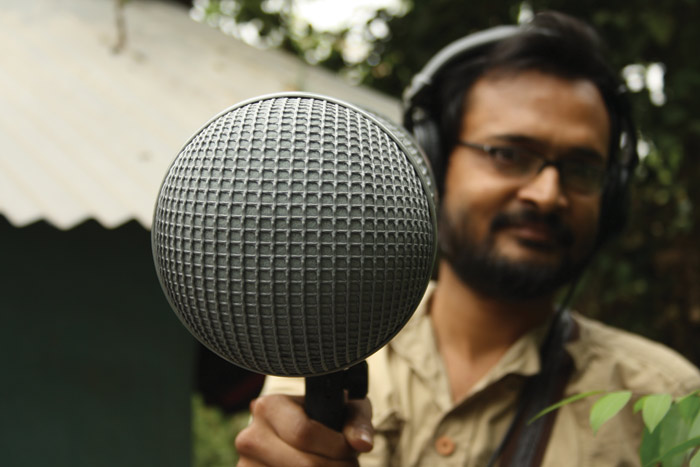My interest in sound art curating began when I started to question the practice of exhibiting sound in a gallery or public space. Can “sound” be “exhibited” at all? Isn’t that a basic fallacy, given the nature of sound? In addressing these fundamental questions from a conceptual angle, I tried to comprehend sound’s specific problem as a curatorial artifact. From a practical consideration, I was however, disconcerted by a lack of practicing curators dedicated to sound art. It seemed to be that those who worked with sound art curating came from a fine-artistic background of dealing with art objects, often bringing with them a certain bias, which I found problematic when dealing with the transitory, contingent nature of sound.
There is a deep confusion and uncertainly about what sound art is, and how it is defined. This confusion is the primary challenge of curating sound art from a conceptual angle. In my opinion, the question is whether sound art derives from art’s musical tradition, stems out of the visual arts, or can be posited within new media art practice where it can stand on its own. This is the question that complicates the accommodation of sound art in the mainstream or predominant fine-artistic and curatorial practices at large, therefore demanding a new set of structures and methodologies.
I agree with sound-theorists that sound is less closely tied to the Kantian category of substance than vision, and therefore any attempt to frame sound within an artistic object or artifact poses problems of a philosophical nature. I am developing an idea, which I would like to call “auto-curating.” The concept is built upon the consideration that sound art is inherently perceptual and participatory, and arguably proposes a new set of hypotheses brought on by this loose coinage. I would like to suggest that a given auditory situation within a traditional exhibition or public showcasing of sound art appears to a drifting listener as liquid and amorphous; triggering and driving the aural imagination further away from the intended experience posed in the foreground. Therefore, it is important to create fertile auditory situations where sound can affect and activate a multiplicity of interpretations, experiences, and moods on the listener’s end, rather than trying to rely on a material object or artifact.
I feel that creating the visual experience of a sound art piece is problematic, and it is necessary to overcome sound art’s reliance on purely visual representation. In a gallery context, sound art usually compromises with the visual “prop” to anchor the sonic experience, but that is likely to backfire in the potential artistic dissemination of the work in the long run.
Certain behaviors of sound, benefit from what I call “object-disorientation.” They are offered greater travel, mobility, and the emergence from a background or field of sound as accentuated in the “post-digital” universe of “big data” provided by these contemporary times. Following that, sound art indeed seems less esoteric, because of our newfound comfort with the immaterial world of big data invisibly flowing through the post-digital realm. In this space of constant and itinerant flow, the production and reception of sound art happens with greater mobility, and interactivity leads to its more subjective interpretation, rather than attempting an objective existence as mere artifact.
In the discourse of sound art curating, instead of the “sound object,” it would be interesting to explore the cognitive-associative thought processes triggered by sound, drawing lines between the source of sound and the listener’s mind that apprehends it. In the process we would be framing an experience of various fertile auditory situations; exploiting sound’s subjective nature at the listener’s end. My artistic and curatorial practice with sound art falls within this experimental domain.
By Budhaditya Chattopadhyay
























